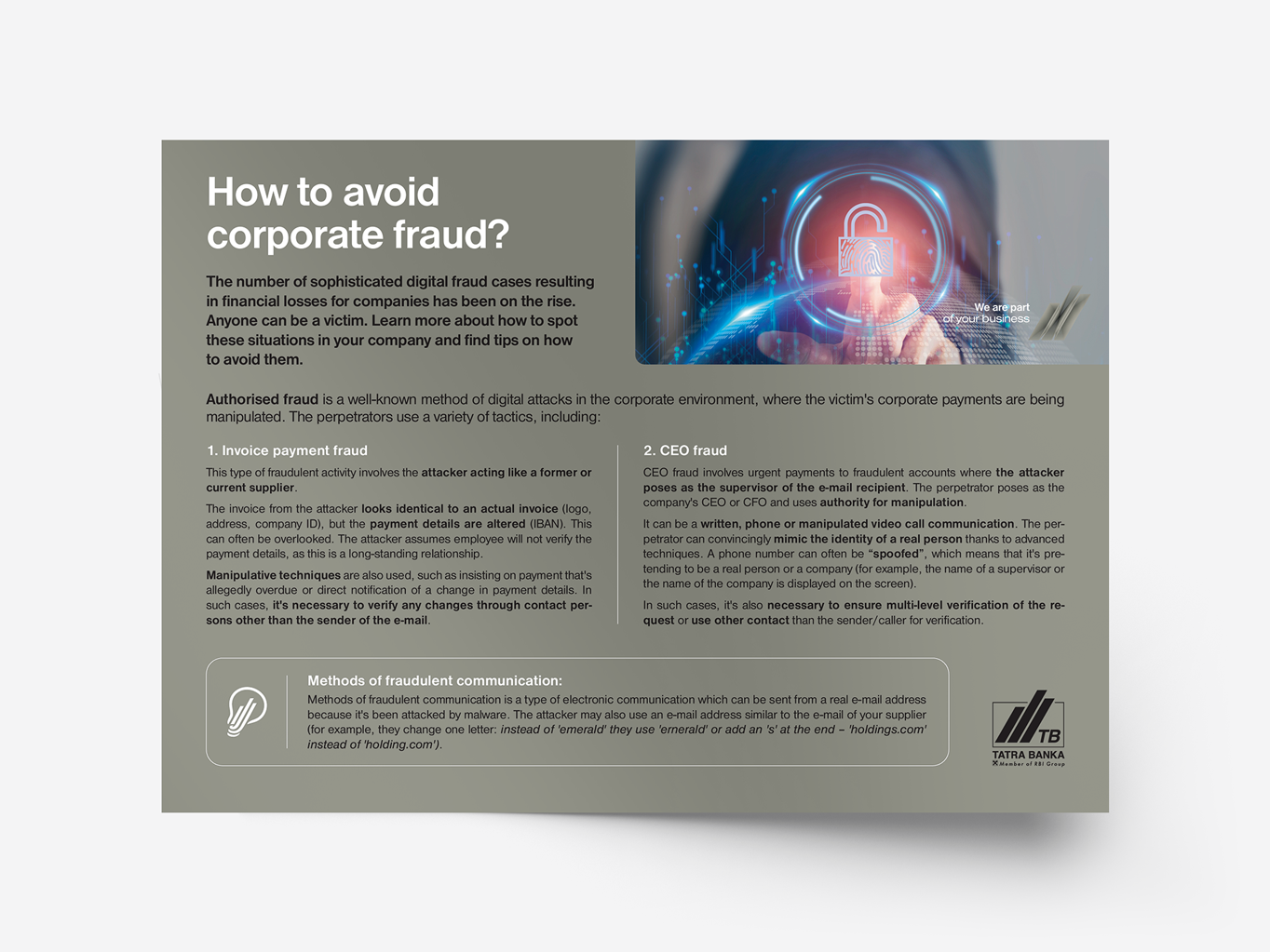Corporate Fraud
How to Avoid Corporate Fraud?
The number of sophisticated digital frauds associated with financial losses in companies is continually increasing.
Anyone can become a victim.
A well-known form of digital attack in companies is authorized fraud, where victims are manipulated into making company payments.
Watch a short video on how to recognize such scams.
Recommendations to Avoid
Authorized Scams:
Education
Regularly educating employees on this topic is crucial for preventing authorized fraud. With sufficient information about fraudulent communication methods, workers can help prevent fraudulent attacks within companies.
Direct Verification
It is essential to thoroughly verify any changes related to payments using a different communication channel than the one from which the request originated. Links or contact information provided in an email or change request letter may be fraudulent and should not be used.
Multilevel Controls
Accountants and employees with access to payments should implement multilevel controls, such as:
- Verifying the business partner through the official company system.
- Checking the email address from which the request originates.
- Confirming non-standard communication methods through a different channel than the initial communication (e.g., phone verification).
Report Authorized Fraud Promptly
Investigating this type of criminal activity is extremely difficult because funds are moved quickly. The likelihood of recovering the funds is low, especially if there is a delay in reporting the incident. Therefore, it is important to regularly educate employees and conduct preventive checks in the payment process to avoid unauthorized fraud.
Methods of Fraudulent Communication:
Fraudulent communications may come from a real email address infected with malware or from an email address or domain that appears legitimate but contains subtle differences (e.g., a single letter change like “emerald” vs. “ernerald” or adding an “s” at the end of an email domain, such as “holding.com” vs. “holdings.com”).
What is Malware?
Malware is malicious software designed to damage or abuse a programmable device, service, or network. It can include phishing attacks that gain access to the victim’s email account or computer system. Once fraudsters gain access, they can monitor communications and identify payment opportunities to target the fraud.
How Does Malware Spread?
Malware spreads primarily through email attachments, malicious advertisements on popular websites (malvertising), or fake software installations. It can also spread via infected USB drives, applications, or text messages.
The Difference Between Malware and a Phishing Attack:
Unlike phishing attacks, malware-related fraud involves the redirection of payments aimed at individuals or small groups within a company. This method targets specific employees, increasing the success rate because if one employee makes the payment according to the instructions, there is no other employee involved to notice the fraudulent activity.
